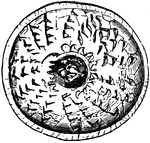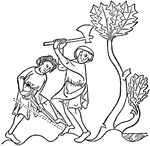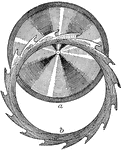
Adz
"A cutting-tool somewhat like an ax, but having the blade placed at right angles to the handle and formed…

Adz
"A cutting-tool somewhat like an ax, but having the blade placed at right angles to the handle and formed…

Adz-plane
"A tool adapted for molding and rabbeting, used in panel-work by coach- and pattern-makers."-Whitney,…
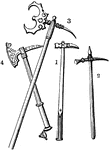
Four Axes
An illustration of four various axes: "1, Horseman's hammer of about the time of Edward IV; 2, Martel-de-fer,…
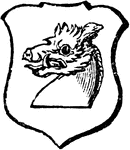
Boar Couped
"Argent, a boar's head proper couped. COUPED. The head or limbs of any animal cut close is called couped."…
Box Chisel
Some chisels for cutting wood have two bezels, one on each side of the blade, as in the gardener's grafting…

Cleft Grafting
Grafting is a horticultural operation which consists in placing together the two cut surfaces of different…
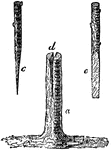
Cleft-Grafting
"Cleft-grafting is another method in common use. The stock a is cleft down from the horizontal cut d,…

Crown Grafting
Grafting is a horticultural operation which consists in placing together the two cut surfaces of different…
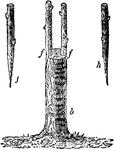
Crown-Grafting
"Crown-grafting is preferable to cleft-grafting, inasmuch as it leaves no open spaces in the wood. The…
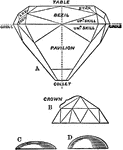
Cut Gems
"Cut Gems. A, brilliant; B, rose; C, goute de suif; D, en cabochon." —The Encyclopedia Britannica,…
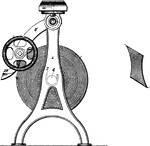
Paper Holder and Cutter
This machine features a paper roll holding spindle with a cutting attachment. A paper cutter is a tool…
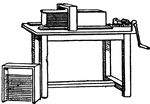
Cutting Machine (Glue Manufacturing)
This illustration shows a frame with cutting wires, and a machine capable of cutting 20,000 glue cakes…
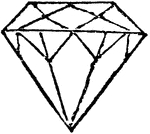
Diamond
"Pure crystalline carbon, the hardest substance known, possessing great lustre owing to its great refracting…

Diamond Cut
The diamond is cut to show the stone's brilliance, creating different parts to the cut: table, crown,…

Square Cut Diamonds
Various types of square cut diamonds. Top row: Old square cut diamonds. Bottom row: English square cut…

Draw Knife (Colonial Tool)
One very useful knife has a long blade with a cutting edge on one side, and a handle at each end, placed…
Framing Socket Chisel
A flat chisel gives a straight cut, and the chips are flat. Work done with this tool is 'chiseled out'.
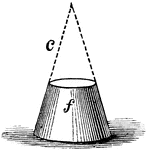
Frustum of a Cone
"The part of any solid between two planes, which may be either parallel or inclined to each other: as,…
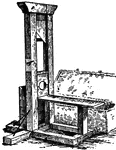
Guillotine
(1.) The guillotine is an instrument employed for the purpose of decapitation. It was officially introduced…

Hay Knife
Some knives have the handle placed at a right angle with the blade. The farmer in cutting hay from the…

Ice Saw
A saw custom suited for cutting through ice. Ice saws may be used to open a hole in the ice covering…

In-Arching (Grafting)
Grafting is a horticultural operation which consists in placing together the two cut surfaces of different…

Inlaying (Grafting)
Grafting is a horticultural operation which consists in placing together the two cut surfaces of different…

The Judgement of Solomon - the Real Mother is Revealed
"And the king said, Divide the living child in two, and give half to the one, and half to the other.…
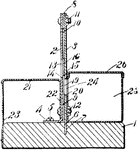
Tobacco Cutting Knife
Tobacco knifes vary greatly from the tobacco leave gathering process, where larger type machetes are…

Kris and Sheath
A Kris. or Creese, is a dagger worn by almost every male over the age of fourteen (and sometimes by…
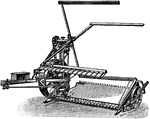
Reaping Machine
A machine for cutting down standing grain, usually worked by a pair of horses, the cutting machinery…
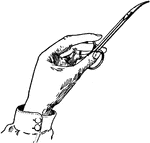
Manicure Scissors
At first scissors seem to have been small, awkward things, with straight blades and handles. Now they…
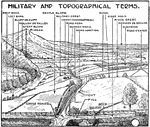
Military and Topographical Terms
Terms used to define features of the earth on a topographical map used by the military.

Screw Plate
"A set of stocks, dies, and taps for cutting threads on bolts and inside of nuts."—The Federal…

Pneumatic Chisel
With a chisel and mallet a sculptor could strike thirty blows a minute; with the new pneumatic chisel…

Pruning Shears
The florist and gardener use scissors with a curved blade for pruning, and a delicate pair for gathering…

Purchase Shears for Cutting Metal
A tool used for cutting metals. "a and c, levers connected by a link bar b, and respectively pivoted…
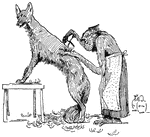
Reynard the Fox: Rukenaw Shaving Reynard
Rukenaw the ape, Reynard's aunt, helps Reynard prepare to fight with Isegrim the wolf. She shaves him…
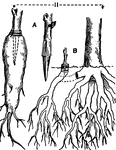
Root Grafting
Grafting is a horticultural operation which consists in placing together the two cut surfaces of different…

Root-Grafting
"Fahlias and paeonies may be grafted by inserting young shoots into the neck of one of the fleshy roots…

Root-Grafting
"In the case of large woody plants thus worked the grafted roots, after the operation is completed,…

Rose Cut
A rose cut is a cut of gemstone. In this cut, the upper surface is shaped into triangular facets of…
Saddle Grafting
Grafting is a horticultural operation which consists in placing together the two cut surfaces of different…

Abrasive Saw Blade
A saw is a tool that uses a hard blade or wire with an abrasive edge to cut through softer materials.…
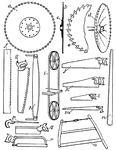
Collection of Saws
This illustration includes numerous types of saws: a. Circular saw (right-hand and left-hand saws have…

Large Pair of Scissors
Scissors are hand-operated cutting instruments. They consist of a pair of metal blades, or tangs, connected…

Attachment Scythe
Used for mowing and reaping, consisting of a long curved blade fixed at an angle to a long bent handle.

Shears for Cutting Metal
Metal cutting shears although similar to a pair of scissors feature a fulcrum closer to the cutting…
Sheep-shearing Shears
Ordinary sheep-shears are not in any sense a pair of scissors. These simple shears have no pivot on…

Shield-Budding
"The simplest and most generally practised form of budding is that called Shield budding or T-budding.…
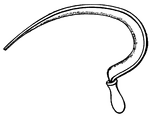
Sickle with Serrated Edge
"A reaping hook; a curved blade of steel (anciently also of bronze) having the edge on the inner side…




